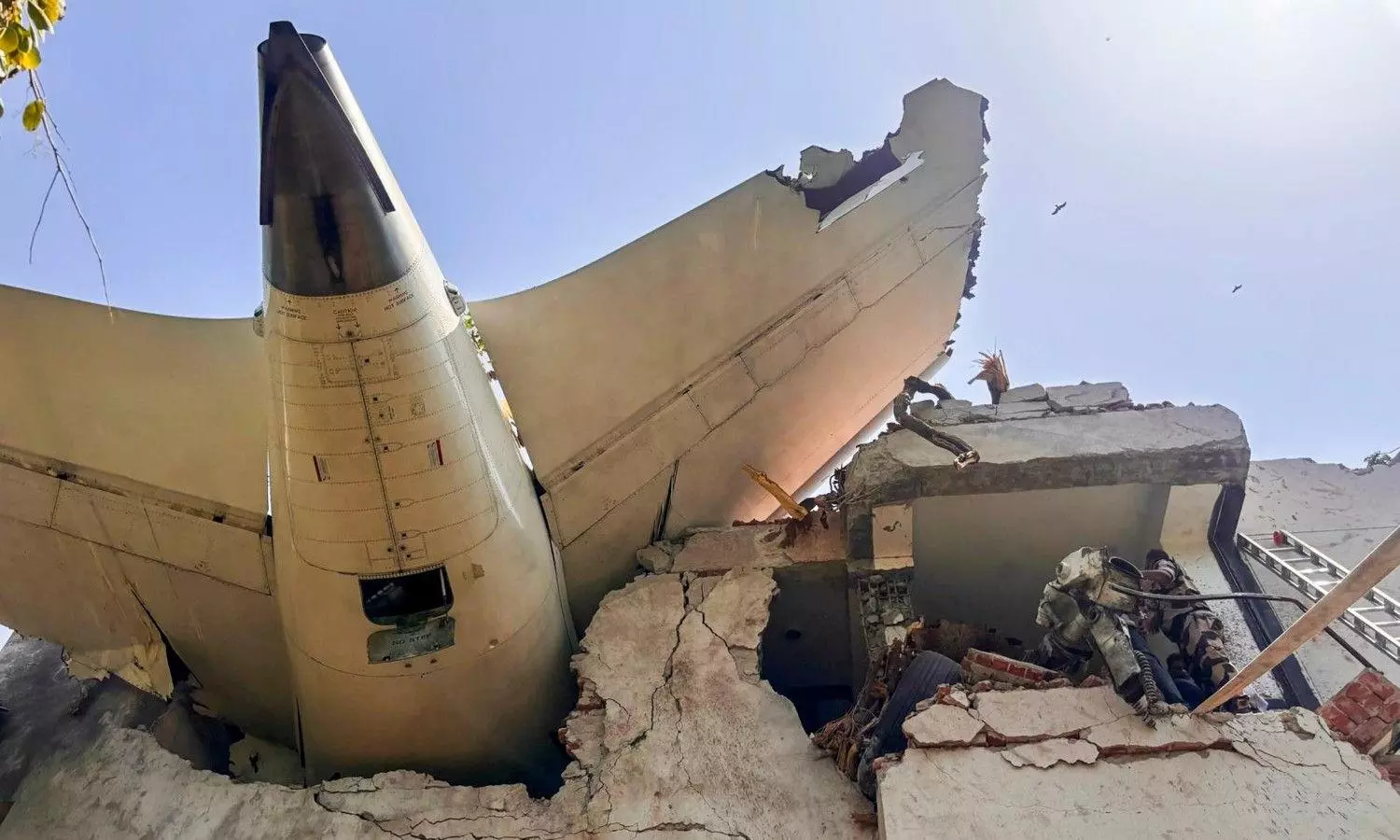
Ahmedabad plane crash: All you need to know about Boeing 787-8 Dreamliner
This is 1st big crash of Boeing 787-8 Dreamliner, which became popular because of its innovative design, fuel efficiency, and comfortable passenger experience

Air India passenger plane Flight AI171, carrying 242 people, crashed in the Meghaninagar area near Ahmedabad's Sardar Vallabhbhai Patel International Airport on Thursday (June 12) afternoon. The London-bound flight met with the accident shortly after its take-off.
This is the first big crash of a Boeing 787-8 Dreamliner, which is a mid-size, twin-engine, wide-body jet airliner. The aircraft became extremely popular because of its innovative design, fuel efficiency, and comfortable passenger experience.
Also Read: Ahmedabad plane crash: A rare tragedy for the Boeing 787 Dreamliner
Lightweight composite structure
About 50 per cent of the Boeing 787-8 Dreamliner’s primary structure is made from carbon fiber-reinforced polymer, making it lighter and stronger than traditional aluminum, reducing the overall weight of the aircraft.
A lighter and robust composite structure enables airlines to reduce fuel use by up to 25 percent compared to other airplanes.
It uses raked wingtips and smoother nose contours to improve its fuel efficiency and performance. Raked wingtips, a backward extension of the wing, help reduce wingtip vortices, which cause drag. Smoother nose contours contribute to better airflow and reduced drag.
Also Read: Ahmedabad Boeing air crash: Top 10 deadly crashes in India in past
Passenger-centric comfort
Boeing created a better flying experience with its 787 Dreamliner family by combining its unique understanding of how the human body reacts to flight conditions.
The 787-8 maintains a lower cabin altitude equivalent to 6,000 feet, higher humidity levels, and improved air quality, reducing passenger fatigue and discomfort.
Innovative interiors offer spacious cabins featuring the largest windows available on any commercial jet, each equipped with electronic dimming controls for enhanced views and reduced glare.
Also Read: Ahmedabad flight crash: What we know so far
Better cabin experience
Apart from this, the aircraft has adjustable lighting that simulates natural light patterns, helping passengers adjust to different time zones and reducing jet lag.
Advanced noise-reducing technologies create a quieter cabin environment, enhancing overall passenger comfort.
The noise footprint of the Boeing 787 is up to 60 percent less than those of the airplanes it will replace, and acoustically treated aerodynamic surfaces make it quieter for surrounding communities.

